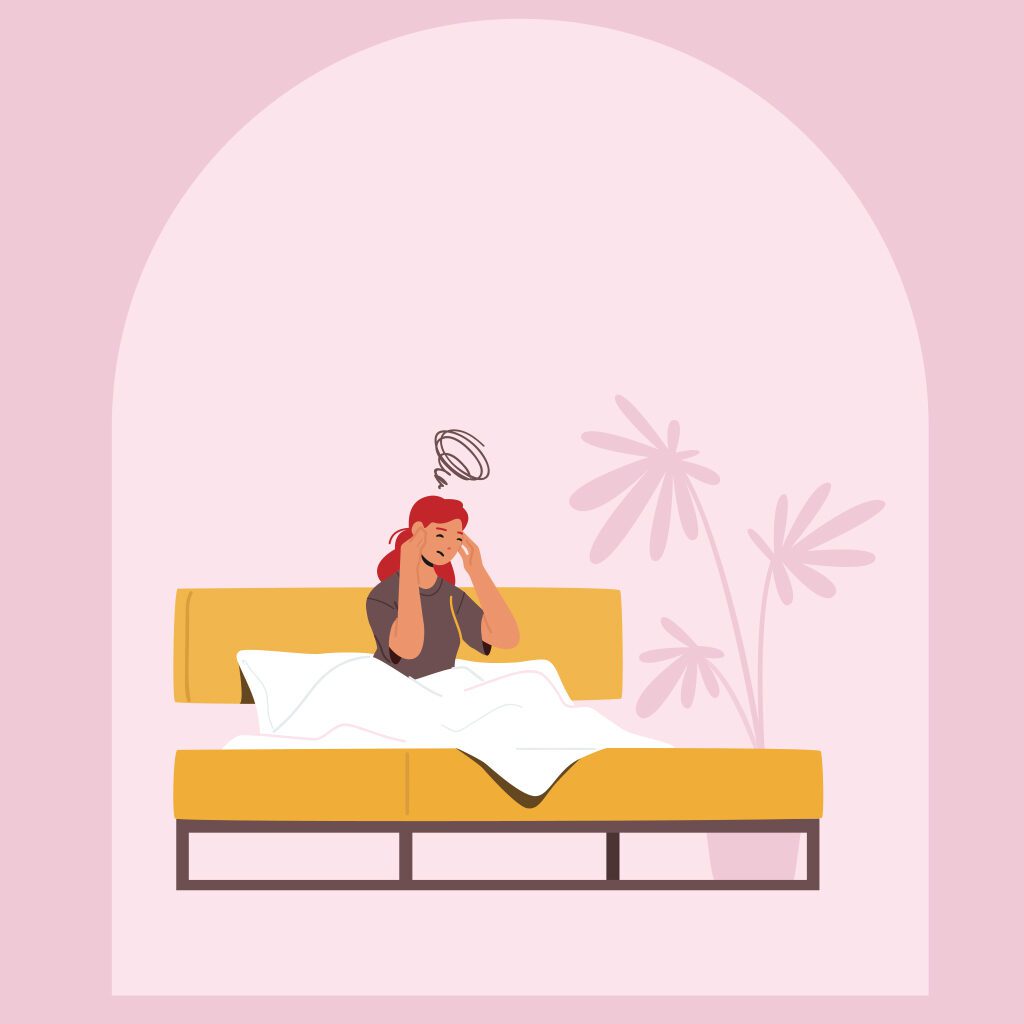Whether you deal with them regularly or only on occasion, headaches are a real pain. There are over 150 different types of headaches, and it can be difficult to determine which one you’re dealing with – particularly if you don’t know what is causing it. Here, local experts Dr. Natasha Ballard, the assistant director at AFC Urgent Care, and Brenda Knowles, an acute care nurse practitioner with Erlanger Neurology, share valuable information about the different types of headaches – including when to seek medical treatment.
Headaches fall into two main categories: primary and secondary. A primary headache means that the headache is the main problem, and it isn’t being caused by an underlying condition. A secondary headache is a symptom of the main problem and can be a warning sign for serious medical conditions.
Primary Headaches
The most common types of headaches, including migraine, tension, and cluster headaches, are primary headaches. Though these headaches can be severe enough to interfere with your life, they are not necessarily dangerous. Some people are genetically predisposed to primary headaches, but they can also be triggered by lifestyle factors such as alcohol consumption, nicotine use, eating certain foods, physical exertion, and insufficient sleep.
There are a number of at-home treatments that can relieve primary headaches. “Over-the-counter medications like acetaminophen, ibuprofen, and naproxen can be taken for these headaches.


Medications labeled for migraine, such as Excedrin Migraine, can be taken for a headache, if approved by your medical provider, since it also contains aspirin and caffeine,” Dr. Ballard advises. “However, you should not take any of the above medications for more than three to four days due to the risk of rebound headaches. Rebound headaches can mimic tension headaches and can last several days after the offending medication – or substance, such as caffeine – is tapered and stopped.”
Additionally, small changes to your daily routine can be an effective way to avoid recurring primary headaches. “Lifestyle management is always a good place to start, including regular sleep, healthy meals, drinking plenty of water, limiting caffeine and alcohol, and smoking cessation,” Knowles explains. “It is also helpful to avoid any triggers that you may have for headaches or migraines, which you can identify by looking for common patterns on your headache days. You should always speak with your doctor if your headaches are new or have changed, as there may be something more going on.”
Secondary Headaches
Secondary headaches are caused by an underlying condition. The cause of a secondary headache can be something simple, like dehydration, but it can also be a life-threatening medical condition. “Any headache that does not respond to over-the-counter medications, returns more frequently, or is more severe than its usual intensity should be evaluated by an outpatient medical professional. Headaches after any trauma or new, frequent, or persistent headache after age 50 should also be evaluated,” Dr. Ballard explains. “Most headaches do not require a head CT/MRI and do not mean there is a tumor, despite what an internet search might suggest. However, there are types of head pain that should be evaluated in the emergency department rather than an outpatient clinic or urgent care office.”
Migraine Headaches



Migraines are usually characterized by throbbing pain on one side of the head. This pain is often accompanied by symptoms like nausea, vomiting, and sensitivity to light or sound. These can last anywhere from a few hours to several days. Some migraines may only cause mild pain, but this does not mean you should dismiss them. Knowles says, “All headaches are concerning as a medical provider, even if it is just from a patient quality of life standpoint.
However, certain characteristics may warrant further investigation and different management than standard migraine treatment.” For this reason, it is important to let your medical provider know if you are experiencing migraines.
Tension Headaches
Tension headaches are sometimes called “hatband headaches” because the pain occurs in the areas where you would feel a hat that is too tight. “Tension headaches occur on both sides of the head at once, as well as around the forehead and temples. They can also extend into the back of the head or neck,” Dr. Ballard explains. Tension headaches tend to start with pressure, but they can escalate to debilitating pain. Like migraines, they can last from hours to days and may warrant medical intervention if at-home treatments aren’t enough.
Cluster Headaches
Cluster headaches are so named because they come as a series of short-lived headaches rather than one long headache. Cluster headaches are characterized by extreme pain that comes on rapidly and typically lasts for less than an hour, but they can happen up to eight times per day over the period of a week or even several months. According to Dr. Ballard, “Cluster headaches only occur around one eye and often include eye tearing, redness, and runny nose.” For most people, cluster headaches will eventually go into remission for months or years at a time, but one in five cases prove to be chronic and go on without breaking the pattern.
“If you are experiencing the ‘worst headache of your life,’ having any neurologic or mental status changes, headache in the setting of an infection, or new seizure activity with a headache, you need to seek emergency evaluation immediately,” Knowles warns. Fortunately, there is a simple mnemonic device that sums up the red flags for a dangerous headache: SNOOP.
S – Systemic Symptoms:
These are additional symptoms that affect the body as a whole, such as fever and body aches. (The S can also stand for “secondary risk factors,” which refers to pre-existing diseases and conditions that warrant closely monitoring any new symptoms.)
N – Neurological Symptoms:
These can be changes in cognitive function, disorientation, difficulty speaking or understanding others, personality changes, vision loss or changes, weakness or numbness in any part of the body, or loss of consciousness.
O – Onset:
This refers to severe headaches that come on suddenly, also known as “thunderclap headaches.”
O – Older Age of Onset:



Whether a headache is mildly bothersome or debilitating, it is important to pay attention. The more information you can share with your doctor, the sooner you can determine the cause of your headaches and find relief."
If you have your first experience with a more severe headache at an older age, particularly after age 50, it could be more significant than a typical headache.
P – Prior Headache History:
Consider the headaches you’ve had in the past. If a headache does not follow the typical patterns you have experienced, or if it is more severe than what you have previously experienced, you should contact your healthcare provider right away.



Natasha Ballard, MD
Assistant Medical Director, AFC Urgent Care



Brenda Knowles
Acute Care Nurse Practitioner, Erlanger Neurology

